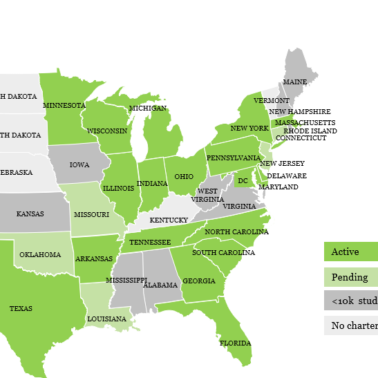Learn more about
Products
Best Practice Solutions for the Municipal Security Lifecycle
FAQs about SRS
SRS In-Depth
What sources does SRS use to build MuniCLIMATE scores?
Can you explain how you calculate the estimated annual carbon transition liability dollar amount?
Isn’t the Social Cost of Carbon a somewhat arbitrary number?
Can you explain the SRS Environmental Risk Scores?
How about the SRS Overall Risk Score?
Can you explain the SRS – Social Vulnerability Score and the SRS – Community Resilience Score?
How would I best use the MuniCLIMATE Scores?
What distinguishes DPC’s approach to Climate Risk from the competition?
—–
What sources does SRS use to build MuniCLIMATE scores?
Spatial Risk Systems’ unique data governance approach connects and standardizes dozens of regulatory and open data sources, from FEMA to the EPA. No value-based judgements. Just facts.
SRS’s use of public data sources also enhances transparency for their scores and should allay users’ concerns about relying on proprietary, “black box” types of data.
—–
Can you explain the meanings of Scope 1 & 2 emissions estimates and how you collect this information?
Scope I emissions are direct greenhouse (GHG) emissions from sources controlled or owned by an organization (e.g., emissions associated with fuel combustion in boilers, furnaces, and vehicles).
For example, the city of Orlando, Florida, owns and operates a Coal Power Plant.
Scope II emissions are indirect GHG emissions associated with purchasing electricity, steam, heat, or cooling. Although scope II emissions physically occur at the facility where they are generated, they are accounted for in an organization’s GHG inventory because they result from the organization’s energy use.
For example, The City of Orlando also purchases electricity from a Florida Utility company.
—–
Can you explain how you calculate the estimated annual carbon transition liability dollar amount?
In order to put an estimated dollar value on each entity’s potential carbon transition liability, we used a metric that is widely accepted in academic circles and used by the EPA to evaluate the dollar cost of environmental projects: the “Social Cost of Carbon” (“SCC”).
According to the Brookings Institute’s definition, the “Social Cost of Carbon” is an estimate of the cost, in dollars, of the damage done by each additional ton of carbon emissions. It also estimates the benefit of any action taken to reduce a ton of carbon emissions.
While the estimates for the SCC can vary widely, ranging from as low as $3-5 per ton under the Trump Administration to $51 per ton under the Biden Administration, we have opted to use the EPA’s current $42 per ton estimate for consistency.
Multiplying the SCC by the Scope 1 & Scope 2 Emissions Estimate would result in the Estimated Annual Carbon Transition Liability in dollar terms.
—–
Isn’t the Social Cost of Carbon a somewhat arbitrary number?
Yes, it is, but it’s the best metric currently available to translate a carbon footprint measured in tons/year into a dollar exposure. That said, since our MuniCLIMATE Scores are relative, not absolute scores, this approach should not affect the relative standings of the entities we score as long as we use the exact SCC estimate throughout.
—–
Can you explain the SRS Environmental Risk Scores?
The Environmental Risk Score measures the aggregated risk to the community from exposure to harmful environmental factors. It is expressed as a total number of environmental factors for each geographic entity that exceeds the 80th national percentile.
- Toxic Releases
- Air Quality
- Water Quality
- Discharges to Water
- Lead Paint
- Underground Tanks
- Waste Management
- Proximity to EPA Super Fund Sites
—–
How about the SRS Overall Risk Score?
The SRS Overall Risk Score is just a roll-up of the SRS Environmental Risk Score and the SRS Climate Impact Score.
—–
Can you explain the SRS – Social Vulnerability Score and the SRS – Community Resilience Score?
The Social Vulnerability Score assesses the entity’s potential vulnerability to any environmental or natural hazard based on its social and economic makeup. For instance, communities with a large senior and/or small children population may have difficulty responding to any natural catastrophe.
The Community Resilience Score assesses the entity’s ability to recover from any environmental or Climate events.
Since designing these initial scores, SRS has recognized they are just two sides of the same coin. Accordingly, they will be combined into a single score when the scores get updated in Q4.
—–
Some SRS Climate Impact component scores, such as Hurricane Risk, Tornado Risk appear too high based on anecdotal evidence. Why is that?
When it comes to weather events, many of us have preconceived notions about the probability of occurrence for particular areas of the country, e.g., hurricanes in Florida, drought in Nevada, etc. However, the SRS Climate Impact scores and their sub-components are based on a combination of the probability of occurrence and the Estimated Annual Loss from any such event.
As a result, a large, densely populated city with a relatively low probability of Tornado occurrence may end up with a score similar to a smaller city with a much higher likelihood of event. This is because the Estimated Annual Loss (“EAL”) for a large city, even for a rare Climate occurrence, would be much larger than the EAL for a small city if and when such an event occurs.
—–
How would I best use the MuniCLIMATE Scores?
Like financial data, our MuniCLIMATE Scores should be used as a critical component of a comprehensive credit risk assessment for any muni entity.
—–
What distinguishes DPC’s approach to Climate Risk from the competition?
We believe we have the only platform offering financial and Climate Risk data for the municipal asset class. Climate exposure data on its own means nothing without the proper context. Having financial and CLIMATE data on the same platform allows our users to compare the Climate exposure to each entity’s fiscal resources (tax base, revenue base, and capital assets).
A few of those combined ratios are displayed in our MuniCREDIT Online app.












